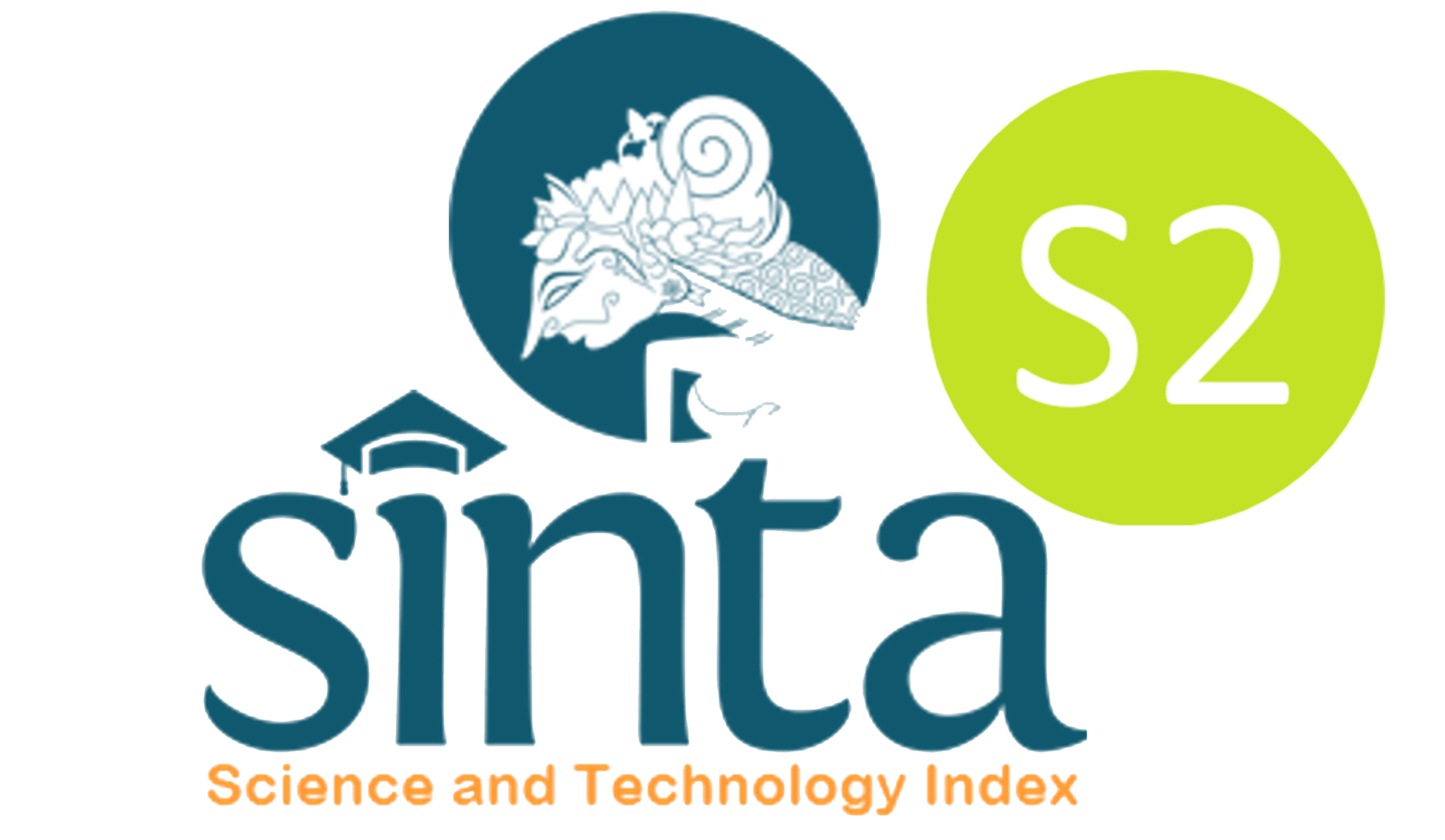Sentiment Analysis and Classification of Forest Fires in Indonesia
Indra Irawanto(1); Cynthia Widodo(2); Atin Hasanah(3); Prema Adhitya Dharma Kusumah(4); Kusirini Kusrini(5*); Kusnawi Kusnawi(6);
(1) AMIKOM Yogyakarta of University
(2) AMIKOM Yogyakarta of University
(3) AMIKOM Yogyakarta of University
(4) AMIKOM Yogyakarta of University
(5) AMIKOM Yogyakarta of University
(6) AMIKOM Yogyakarta of University
(*) Corresponding Author
AbstractTwitter is a well-known social media platform since it allows users to retweet, leave comments, exchange the latest information, and even find out about forest fires. However, no one has processed Twitter data in the form of the topic of forest fires. Despite the fact that this information is incredibly important for determining how much people care about sharing this knowledge and this phenomenon. Hence, one of the efforts in managing Twitter data in the form of text is using NLP (Natural Language Processing) which is now starting to be widely discussed. In addition, the use of word weighting utilizing Vader will also be used in this process. Furthermore, the use classifying process is conducted using 3 kinds of algorithms including Naïve Bayes, Random Forest and SVM (Support Vector Machine). The results of this study, the accuracy obtained from each method has not reached 90%. The Precision, Recall and F1-Score values have also not reached 90%.
KeywordsSentiment Analysis; Forest fires; Naive Bayes; Random Forest; SVM (Support Vector Machine).
|
Full Text:PDF |
Article MetricsAbstract view: 402 timesPDF view: 183 times |
Digital Object Identifier https://doi.org/10.33096/ilkom.v15i1.1337.175-185 https://doi.org/10.33096/ilkom.v15i1.1337.175-185
|
Cite |
References
A. Ristya, C. Chien, and A. Achmad, “Social media sentiment analysis to monitor the performance of vaccination coverage during the early phase of the national COVID-19 vaccine rollout,” Comput. Methods Programs Biomed., vol. 221, p. 106838, 2022, doi: 10.1016/j.cmpb.2022.106838.
H. A. Santoso, E. H. Rachmawanto, A. Nugraha, A. A. Nugroho, D. R. I. M. Setiadi, and R. S. Basuki, “Hoax classification and sentiment analysis of Indonesian news using Naive Bayes optimization,” Telkomnika (Telecommunication Comput. Electron. Control., vol. 18, no. 2, pp. 799–806, 2020, doi: 10.12928/TELKOMNIKA.V18I2.14744.
A. Sepriando, H. Hartono, and R. H. Jatmiko, “Deteksi Kebakaran Hutan Dan Lahan Menggunakan Citra Satelit Himawari-8 Di Kalimantan Tengah,” J. Sains Teknol. Modif. Cuaca, vol. 20, no. 2, pp. 79–89, 2020, doi: 10.29122/jstmc.v20i2.3884.
S. Sakellariou et al., “Remotely sensed data fusion for spatiotemporal geostatistical analysis of forest fire hazard,” Sensors (Switzerland), vol. 20, no. 17, pp. 1–20, 2020, doi: 10.3390/s20175014.
M. Hung et al., “Social network analysis of COVID-19 sentiments: Application of artificial intelligence,” J. Med. Internet Res., vol. 22, no. 8, pp. 1–13, 2020, doi: 10.2196/22590.
L. Augustyniak, P. Szymánski, T. Kajdanowicz, and W. Tuliglowicz, “Comprehensive study on lexicon-based ensemble classification sentiment analysis,” Entropy, vol. 18, no. 1, pp. 1–29, 2016, doi: 10.3390/e18010004.
T. Mustaqim, K. Umam, and M. A. Muslim, “Twitter text mining for sentiment analysis on government’s response to forest fires with vader lexicon polarity detection and k-nearest neighbor algorithm,” J. Phys. Conf. Ser., vol. 1567, no. 3, pp. 8–15, 2020, doi: 10.1088/1742-6596/1567/3/032024.
F. V. Sari and A. Wibowo, “Analisis Sentimen Pelanggan Toko Online Jd.Id Menggunakan Metode Naïve Bayes Classifier Berbasis Konversi Ikon Emosi,” J. SIMETRIS, vol. 10, no. 2, pp. 681–686, 2019.
S. S. Aljameel et al., “A sentiment analysis approach to predict an individual’s awareness of the precautionary procedures to prevent covid-19 outbreaks in Saudi Arabia,” Int. J. Environ. Res. Public Health, vol. 18, no. 1, pp. 1–12, 2021, doi: 10.3390/ijerph18010218.
M. A. Fauzi, “Random forest approach fo sentiment analysis in Indonesian language,” Indones. J. Electr. Eng. Comput. Sci., vol. 12, no. 1, pp. 46–50, 2018, doi: 10.11591/ijeecs.v12.i1.pp46-50.
A. Alsaeedi and M. Z. Khan, “A study on sentiment analysis techniques of Twitter data,” Int. J. Adv. Comput. Sci. Appl., vol. 10, no. 2, pp. 361–374, 2019, doi: 10.14569/ijacsa.2019.0100248.
B. Gunawan, H. S. Pratiwi, and E. E. Pratama, “Sistem Analisis Sentimen pada Ulasan Produk Menggunakan Metode Naive Bayes,” J. Edukasi dan Penelit. Inform., vol. 4, no. 2, p. 113, 2018, doi: 10.26418/jp.v4i2.27526.
P. Arsi and R. Waluyo, “Analisis Sentimen Wacana Pemindahan Ibu Kota Indonesia Menggunakan Algoritma Support Vector Machine (SVM),” J. Teknol. Inf. dan Ilmu Komput., vol. 8, no. 1, p. 147, 2021, doi: 10.25126/jtiik.0813944.
E. A. Marwa and A. B. Kristanto, “Analisis Sentimen Pengungkapan Informasi Manajemen : Text Mining Berbasis Metode VADER,” Own. Ris. J. Akunt., vol. 6, pp. 2973–2984, 2022.
N. P. Dewi and U. Ubaidi, “Lexical Rule and Lexicon Effect for Part of Speech Tagging Bahasa Madura,” MATRIK J. Manajemen, Tek. Inform. dan Rekayasa Komput., vol. 18, no. 1, pp. 65–72, 2018, doi: 10.30812/matrik.v18i1.332.
P. Balaji, D. Haritha, and O. Nagaraju, “An Overview on Opinion Mining Techniques and Sentiment Analysis,” Int. J. Pure Appl. Math., vol. 118, no. 7, pp. 61–69, 2018, [Online]. Available: http://www.ijarcce.com/upload/2014/july/IJARCCE2M s angulakshmi An Analysis on.pdf
E. Chen, K. Lerman, and E. Ferrara, “Tracking social media discourse about the COVID-19 pandemic: Development of a public coronavirus Twitter data set,” JMIR Public Heal. Surveill., vol. 6, no. 2, 2020, doi: 10.2196/19273.
E. H. Muktafin and P. Kusrini, “Sentiments analysis of customer satisfaction in public services using K-nearest neighbors algorithm and natural language processing approach,” Telkomnika (Telecommunication Comput. Electron. Control., vol. 19, no. 1, pp. 146–154, 2021, doi: 10.12928/TELKOMNIKA.V19I1.17417.
N. M. A. J. Astari, Dewa Gede Hendra Divayana, and Gede Indrawan, “Analisis Sentimen Dokumen Twitter Mengenai Dampak Virus Corona Menggunakan Metode Naive Bayes Classifier,” J. Sist. dan Inform., vol. 15, no. 1, pp. 27–29, 2020, doi: 10.30864/jsi.v15i1.332.
A. P. Giovani, A. Ardiansyah, T. Haryanti, L. Kurniawati, and W. Gata, “Analisis Sentimen Aplikasi Ruang Guru Di Twitter Menggunakan Algoritma Klasifikasi,” J. Teknoinfo, vol. 14, no. 2, p. 115, 2020, doi: 10.33365/jti.v14i2.679.
E. Fitri, “Analisis Sentimen Terhadap Aplikasi Ruangguru Menggunakan Algoritma Naive Bayes, Random Forest Dan Support Vector Machine,” J. Transform., vol. 18, no. 1, p. 71, 2020, doi: 10.26623/transformatika.v18i1.2317.
K. Arun and A. Srinagesh, “Multi-lingual Twitter sentiment analysis using machine learning,” Int. J. Electr. Comput. Eng., vol. 10, no. 6, pp. 5992–6000, 2020, doi: 10.11591/ijece.v10i6.pp5992-6000.
P. Bruce, A. Bruce, and P. Gedeck, Practical Statistics for Data Scientists: 50+ Essential Concepts Using R and Python, 2nd ed. Sebastopol, America: O’Reilly Media, 2020. doi: 10.1080/00401706.2021.1904738.
H. Raza, M. Faizan, A. Hamza, A. Mushtaq, and N. Akhtar, “Scientific text sentiment analysis using machine learning techniques,” Int. J. Adv. Comput. Sci. Appl., vol. 10, no. 12, pp. 157–165, 2019, doi: 10.14569/ijacsa.2019.0101222.
Y. Nurdiansyah, S. Bukhori, and R. Hidayat, “Sentiment analysis system for movie review in Bahasa Indonesia using naive bayes classifier method,” J. Phys. Conf. Ser., vol. 1008, no. 1, 2018, doi: 10.1088/1742-6596/1008/1/012011.
Refbacks
- There are currently no refbacks.
Copyright (c) 2023 atin hasanah, Indra Irawanto, Cynthia Widodo, Prema Kusumah, Kusrini Kusrini, Muhammad Kusnawi

This work is licensed under a Creative Commons Attribution-ShareAlike 4.0 International License.










